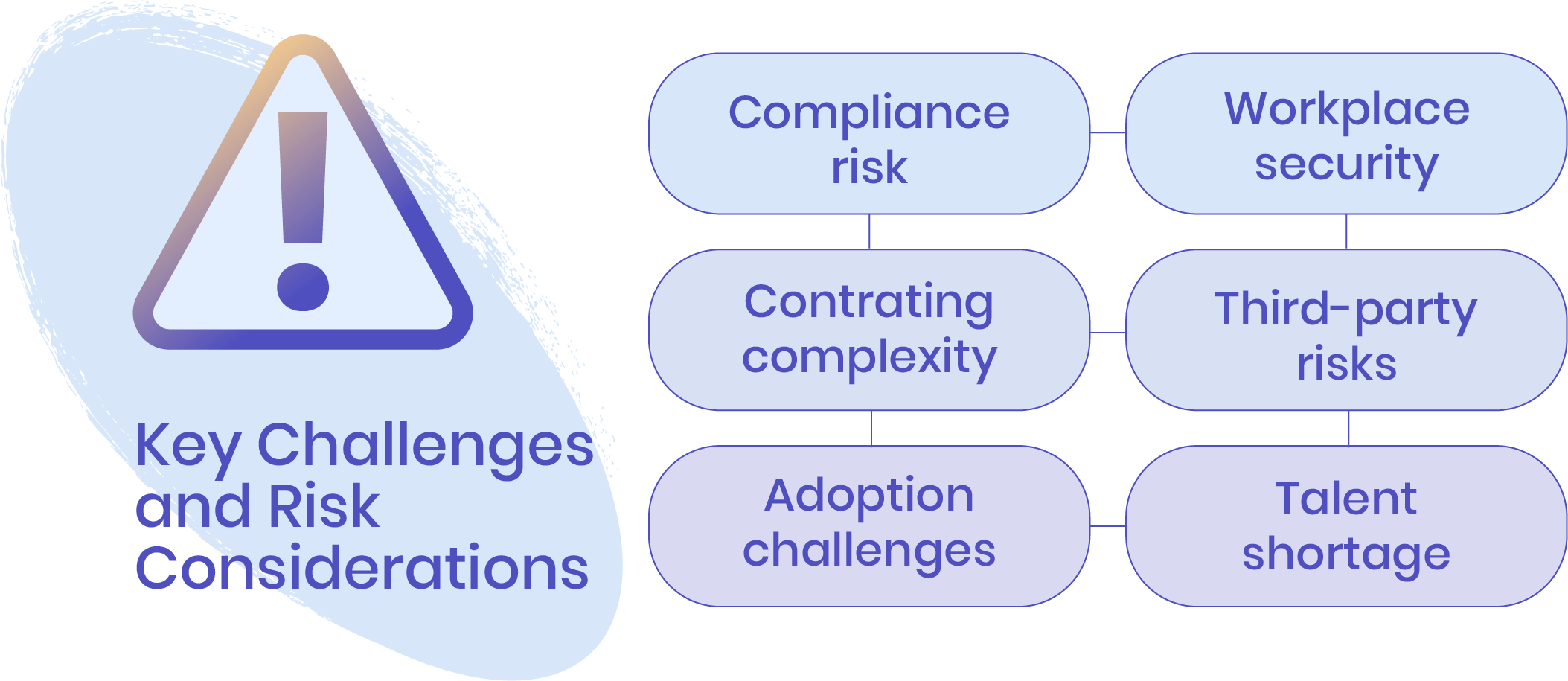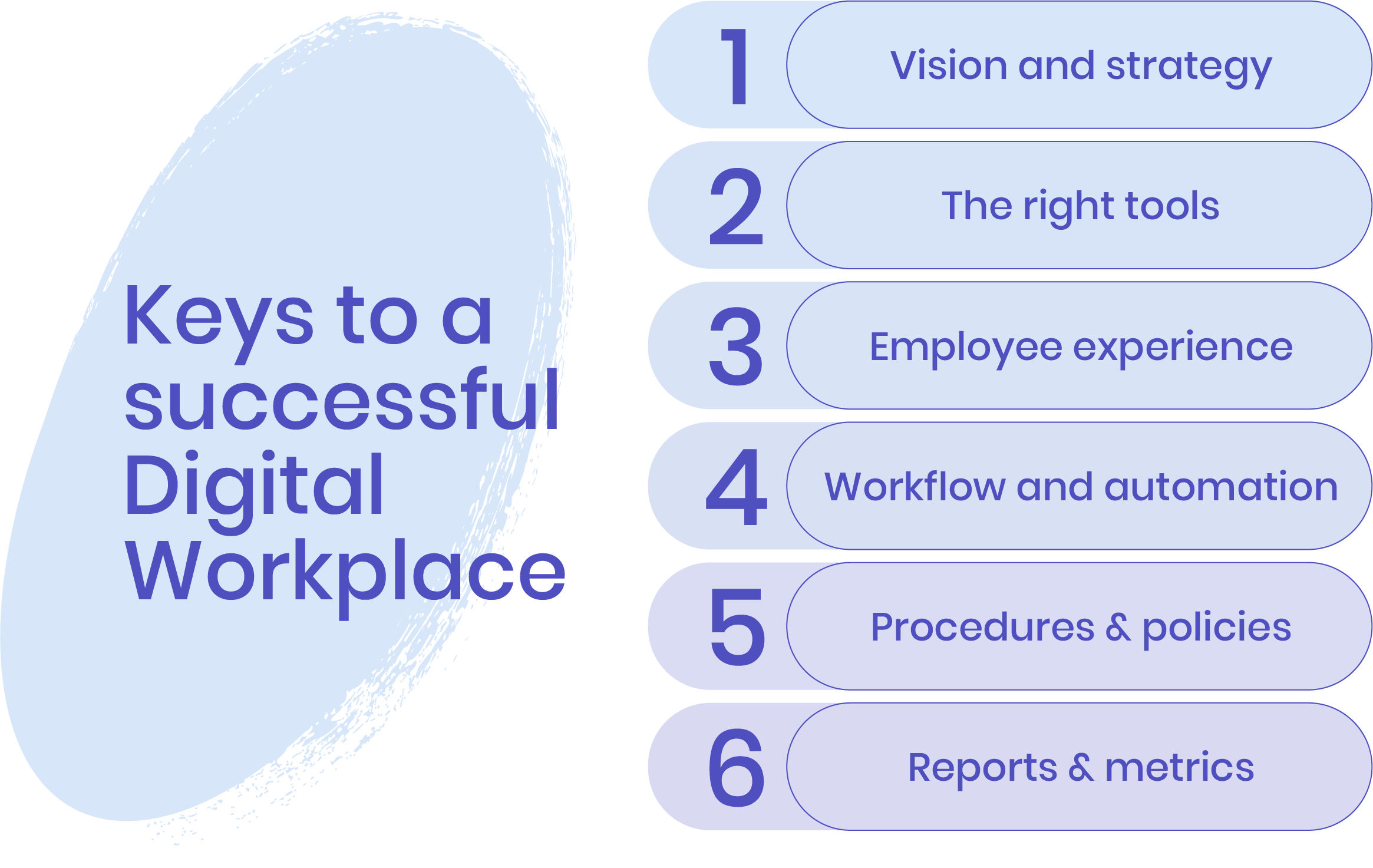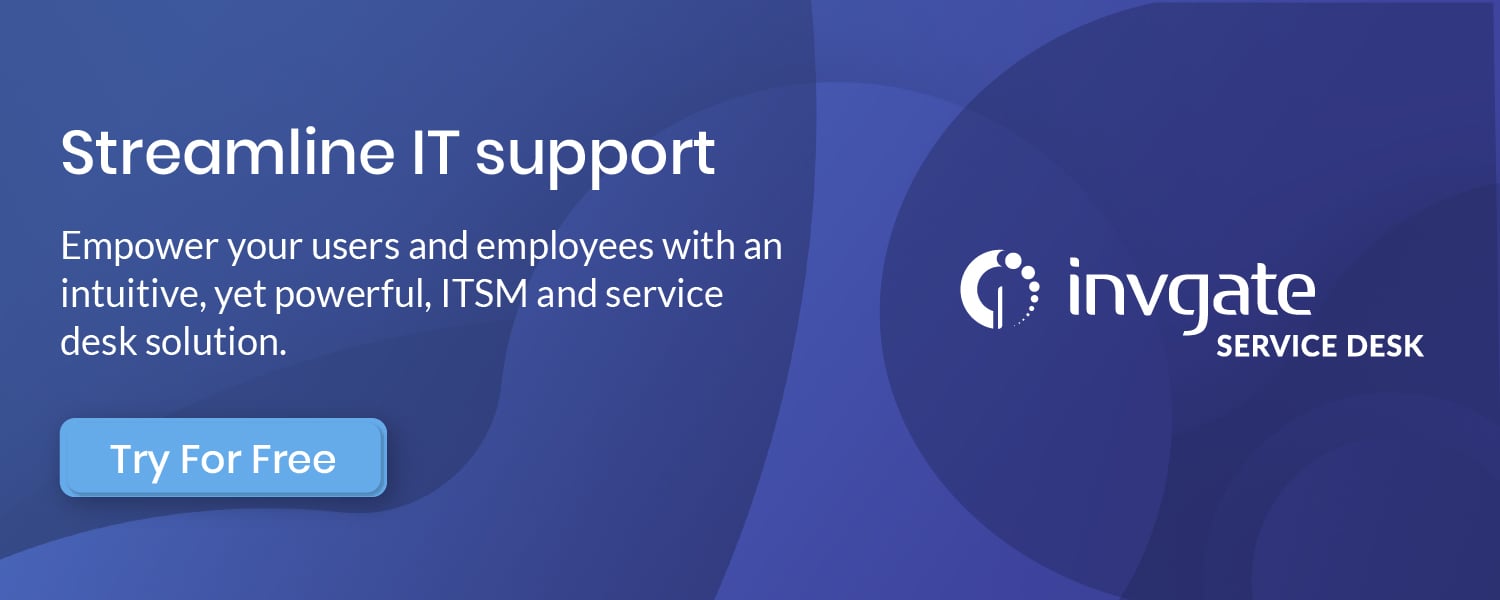The COVID-19 pandemic has completely transformed all of our perceptions of what defines a workplace. It’s not a place where you go every day; waking up every morning, catching the bus, reaching the office, sitting down next to your colleagues, have lunch with everyone, and return back. It is not even a physical location anymore, it’s anywhere you log in with your laptop. It’s the set of hardware and tools that you use to get connected to your team, collaborate, and go through your daily tasks.
And in tune with this shift to remote work, the popularity of digital workplace solutions has grown, as organizations were looking for a single interface for everyone in an organization to work efficiently.
While remote work was a popular option among the employees even before the pandemic, organizations were reluctant to go fully remote. The general opinion was that technology wasn’t mature yet, and organizations had concerns about managing a remote workforce and ensuring productivity. In fact, IBM was bringing employees back to the office at the end of 2017.
The pandemic and the lockdowns forced companies and employees to rethink remote work, leading to renewed interest in digital workplace solutions. While the benefits of digital workplaces cannot be understated, it does present some risks.
The digital workplace: A quick explainer
If you want to learn all there is to know about the digital workplace, we wrote a thorough explainer from an IT perspective which you can read here: what is the digital workplace? But we'll quickly summarize it for you: a digital workplace is a complete set of tools and software an employee will need to do their daily activities presented through a single interface.
For example, if you’re a project manager, you may use Google docs for editing documents, Trello or Asana for project management, Microsoft Teams or Slack for communication, and Canva for creating a presentation. Your team will be using their own set of tools for work. Since these discrete software are not connected with each other, everyone ends up switching between these apps throughout the day. A digital workplace presents a streamlined solution for the entire organization to work online in one place.
Collaboration tools and digital workplace solutions improve productivity within an organization. Activities of an organization are carried out by more than one person, and every one of them is dependent on another. And effective collaboration tools create a single organized table for everyone to work together as a team, simplifying workflow and streamlining collaboration in IT.
Possible risks of a digital workplace (and how to avoid them)

While digital workplaces bring a lot of benefits to the organization, there’s also significant risk attached to them. Before implementing a solution, it is important to know these risks and devise measures to mitigate them. Here are a couple of possible risks of a digital workplace, as well as some tips to avoid them.
Increased vulnerability of the organization to cyberattacks
The biggest risk of implementing a digital workplace solution is that without proper precautions (such as robust cybersecurity asset management), it can leave the organization highly vulnerable to cyber-attacks. During remote work, or in a BYOD situation, a digital workplace creates more fronts for a bad actor to attack. The use of personal devices for work, as well as the increased susceptibility of employees towards social engineering attacks, should be a cause for concern. In an office scenario, a fully integrated system means that a missed security update in a device or a security lapse in an app will leave the entire system vulnerable.
To mitigate the cybersecurity risks of a digital workplace, implement robust security practices and policies and ensure that the employees are aware of them through regular training.
Use IT asset management software to keep track of the devices connected to the organization’s network. Ensure unauthorized devices are not connected and that all the devices have the latest software and security updates on them.
Employee privacy concerns
Employees will have well-placed concerns about using a digital workplace solution that can track their performance. Organizations may find it difficult to find the right balance between maintaining employee privacy and improving productivity promised with a digital workplace system. Digital workplace solutions risk invading employee privacy, particularly while working from home.
The best way is to reduce data collection to the bare minimum and anonymize the data wherever possible. And have a transparent privacy and data collection policy.
Compliance with government regulations
In some ways, digital workplace solutions make it easy to ensure that the organization is compliant with government regulations. It’s easy to implement the rules and keep a record of the activities while using digital workplace software. Organizations will be more prepared for audits with less effort, and without allocating extra resources. But without proper implementation, digital workplace systems can run afoul of regulations. Since the entire organization relies on the solution, a misunderstanding during the implementation may create a ripple effect across the entire company.
To mitigate the risks, it’s best to verify and update the digital workplace policies regularly and get them audited by a third party.
Lack of personal connections
Personal connections between colleagues create better teams and smoother collaborations. And a completely digital workplace will lose out on this. The HR department can mitigate this risk to a certain extent by organizing events or informal team meetings using tools for employee engagement to create better personal connections over a digital workplace.
What are the risks posed by different apps?
Most digital workplace systems and even collaboration tools like Microsoft Teams allow you to integrate third-party apps. Unless these apps are carefully analyzed and secured, they may present unknown risks to the organization.
Cybersecurity risks of digital workplace apps
As with any digital solution, the major risk with a digital workplace app is that of a cyber attack or a data breach. Unlike the digital workplace software, the security practices of third-party apps may not be known, and need not be robust enough. And these apps may store or process data within their own servers which creates a confidentiality problem.
Besides the risk of accidental data breaches, these apps may collect user data on the activities of your organization. The app developers may use this data to improve their product, or maybe even for creating user profiles for targeted advertisement.
Without proper training or security measures, employees may find third-party apps they find useful and integrate into your digital workplace solutions. This creates a shadow IT situation, a huge security risk to the organization.
To avoid security risks of a digital workplace app, review every app as well as its security and data collection practices carefully. An accessible and robust IT service desk can help your organization avoid a shadow IT situation, as employees can get the best and safe solutions quickly for their IT problems.
Legal risks of digital workplace apps.
Aside from the security issues, data collection and data storage policies of third-party apps also pose a legal risk for the organization. Regulatory authorities in different countries and provinces have specific data storage rules and laws. For example, GDPR mandates that data of users from the EU must be stored within the European Union.
And if the apps that your organization uses don’t comply with the regulations, it exposes you to lawsuits and penalties.
Digital workplace apps and digital workplace software in general also pose the risk of running afoul of employment regulations. As most of the workforce went remote, a common trend observed was that employees felt obligated to stay available even during their off-hours. Such a situation, without clear employee policies, will create both an unhealthy work environment and expose you to lawsuits.
Basic tips and best practices for digital workplaces
While introducing a digital workplace solution, it’s best to go with a system that fits the existing workflow. A sudden introduction of a brand new system can hamper productivity and bring the whole organization to a sudden halt. Maybe start with just one department, and extend it to all the other departments gradually. The members of the first department will serve as champions of the new digital workplace and can encourage and help other employees to adopt the new solution.
While developing or adopting the new solution, it will be a good idea to include leaders from different departments in the organization. This will ensure that the new system is suitable for employees engaged with diverse activities. Including these leaders from the start will also motivate them to encourage others in their departments to move to the new solution.

Keep your digital workplace flexible and robust to keep up with the dynamic changes with the organizational needs. For this, continuous feedback is important. As employees get used to the new system, flaws and deficiencies in the system will be apparent. And without an efficient mechanism in place to collect actionable feedback and implement changes as needed, the digital workplace may be counterproductive. An integrated IT service desk can collect employee feedback and provide solutions efficiently.
Frequently asked questions
What is the main risk of a digital workplace solution?
The primary risk of implementing any digital workplace is that of a cyber attack. When an organization goes completely digital and integrates all of its activities into a single interface, it creates a huge cybersecurity risk. But this risk can be mitigated to a large extent with proper precautions and strategies. And the benefits of a digital workplace far outweigh the risks.
What are the benefits of a digital workplace solution?
A digital workplace improves the overall productivity within the organization. With a digital workplace, employees can collaborate and communicate better and spend less time finding tools or switching across different apps for the same job. It can also automate simple tasks, leaving teams to focus on more meaningful and revenue-generating tasks. It creates an improved employee experience and satisfaction, and can directly contribute to improved employee retention rates in the organization.
How can I manage my team using a digital workplace?
An average digital workplace solution will present many tools to monitor the productivity of your team members. Many digital workplace solutions also have advanced AI and machine learning capabilities that can deliver actionable insights regarding your team. You can also use bots and automation to streamline simple tasks like clocking the hours or marking their attendance and let your team focus on more important tasks.
Will a digital workplace improve the employee experience?
A digital workplace can reduce the workload of your customer service team and leave them equipped to better serve your customers. With automated replies and an integrated knowledge base, your team can reduce the wait time for your customers and improve the customer experience.
















